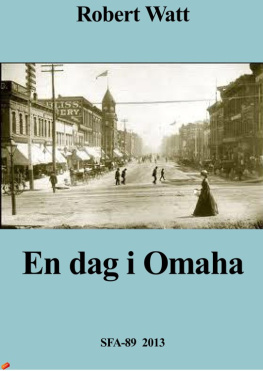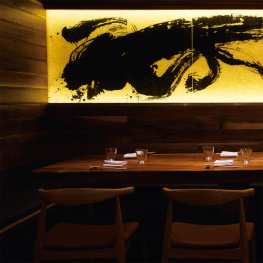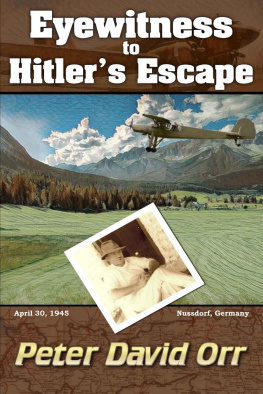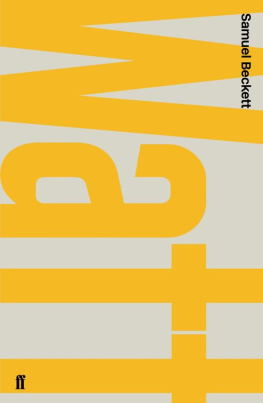Escape from Hitlers Europe
Escape from
Hitlers Europe
An American Airman
behind Enemy Lines
George Watt
THE UNIVERSITY PRESS OF KENTUCKY
Publication of this volume was made possible in part by a grant from the National Endowment for the Humanities.
Copyright 1990 by George Watt
The University Press of Kentucky
Scholarly publisher for the Commonwealth, serving Bellarmine University, Berea College, Centre College of Kentucky, Eastern Kentucky University, The Filson Historical Society, Georgetown College, Kentucky Historical Society, Kentucky State University, Morehead State University, Murray State University, Northern Kentucky University, Transylvania University, University of Kentucky, University of Louisville, and Western Kentucky University.
All rights reserved.
Editorial and Sales Offices: The University Press of Kentucky 663 South Limestone Street, Lexington, Kentucky 40508-4008 www.kentuckypress.com
11 10 09 08 07 5 4 3 2 1
Library of Congress Cataloging-in-Publication Data
Watt, George, 1913-1994.
[Comet connection]
Escape from Hitlers Europe : an American airman behind enemy lines / George Watt.
p. cm.
Originally published in 1990 under the title The Comet Connection.
Includes index.
ISBN-13: 978-0-8131-9176-8 (pbk. : alk. paper)
ISBN-10: 0-8131-9176-9 (pbk.: alk. paper) 1. Watt, George, 1913-1994. 2. World War, 1939-1945Underground movementsBelgium. 3. World War, 1939-1945Underground movementsEurope, Western. 4. EscapesEurope. 5. World War, 1939-1945Personal narratives, American. 6. United States. Army Air ForcesAirmenBiography. I. Title.
D802.B4W38 2007
940.544973092dc22
2006035716 |
This book is printed on acid-free recycled paper meeting the requirements of the American National Standard for Permanence in Paper for Printed Library Materials. | |
Manufactured in the United States of America.
| Member of the Association of American University Presses |
For Margie
Contents
Maps and Figure
Hitlers Europe, December 1943
My Thanks
To John Taylor and Frederick Pernell of the National Archives in Washington, D.C., and to Victor Berch of the Abraham Lincoln Brigade Archives (ALBA) at Brandeis University.
To Joseph Clark, Ruth Clark, Alan Dawley, Joseph Greene, Betsy Jameson, Jill Jarnow, David Lenfest, Abe Osheroff, Leland Smith, Randall Smith, and Nancy Wechsler, who helped in various ways.
To Ingrid Segers, who acted as interpreter, and to Monique Inghels, who interpreted and opened so many doors in Hamme and Zele.
To Daniel and Molly Watt, who traveled to Belgium to photograph and help with the interviews.
To Steven Watt, who gave encouragement and advice, and to Joseph Watt, my grandson, who at age thirteen said, Its a good story Grandpa, but it needs editing.
To William Susman, a fellow veteran of the Abraham Lincoln Brigade and World War II, who did just thatspending countless hours with me and my manuscript, destiltifying language, pruning sentences, and offering invaluable suggestions.
And above all, to the one I cannot thank enough, my wife Margie, who was part of the events and part of its telling, and whose love sustained me all the way.
To my family and friends who urged me on, my thanks.
Prologue
In 1984 my wife and I traveled to Belgium in an effort to tie up some loose ends in the story I was writing about my experience in Nazi-occupied Europe. My Belgian friends and I had been out of touch since the end of World War II, and it was a bittersweet reunion. As we came away my wife said, This book has to be their story too! You owe it to them.
Four days later, in beautiful Nice, a thief broke into the trunk of our rented car and made off with my camera, my tape recorder, 200 shots of undeveloped film, 60 pages of notes, andto my absolute horror!six hours of taped interviews.
I had to go back! In the course of preparing my return in 1985, I learned for the first time that the organization that had engineered my escape was the Comet Line. The Line was one of several escape networks operating in Belgium and France. It had saved more people and lasted longer than any other rescue organization. The Gestapo destroyed it several times, but it always reemerged to continue its dangerous mission. It paid a terrible price; for every airman saved, there were two Comet arrests. Many were executed and many died in concentration camps
A twenty-four-year-old Belgian nurse, Andre de Jongh, was its founder. After Dunkirk, Andre, with the help of her father, Frdric, developed a rescue operation for British soldiers stranded in Belgium. Later, using the same network, Dde, as she became known in the underground, established an escape route from Belgium through France and over the Pyrenees into Spain. She named it the Comet Line to denote the speed with which airmen were returned to England. Dde herself had made at least eighteen round trips delivering airmen across the Pyrenees before she was arrested in January 1943. Her indomitable will inspired her coworkers, a majority of whom were women, to acts of extraordinary courage. And women continued to hold leadership positions to the very end.
This book is my tribute to the intrepid women and men of the Comet Line and to the townspeople of Zele and Hamme in Belgium, who risked their lives to protect me.
This book is also an appreciation of my crew. From April 1943, when our B-17 bomber crew was assembled at Pyote Air Base in Texas, till our final mission over Germany seven months later, we were never apart. We went through some rough air battles at Mnster, Wihelmshaven, Schweinfurt, Gdynia. We became seasoned veterans, growing attached to one another in the process.
Lt. William Bram well, a twenty-six-year-old Californian, raised on a Kansas wheat farm, was our commander. Low key, rugged, and competent, his calm efficiency pulled us through some pretty tight scrapes. I still remember returning from the Schweinfurt raid, our plane badly damaged, without enough gas to reach our base. Bramwell flew us through the dangerous London balloon barrageblimps with chains dangling to keep the Luftwaffe outand brought us down with a beautiful three-point landing on the short uphill runway of an RAF Spitfire base.
Lt. William (Jim) Current, only nineteen, from New Jersey, our copilot and second in command, was always enthusiastic. Trained as an airplane mechanic before he became a pilot, he knew his ship. I was constantly amazed that one so young could handle such a complex job.
Lt. John Maiorca, twenty-five, from Connecticut, a good-looking man with dark hair, self-assured, warm, and outgoing, was our bombardier and handled one of the nose guns.















